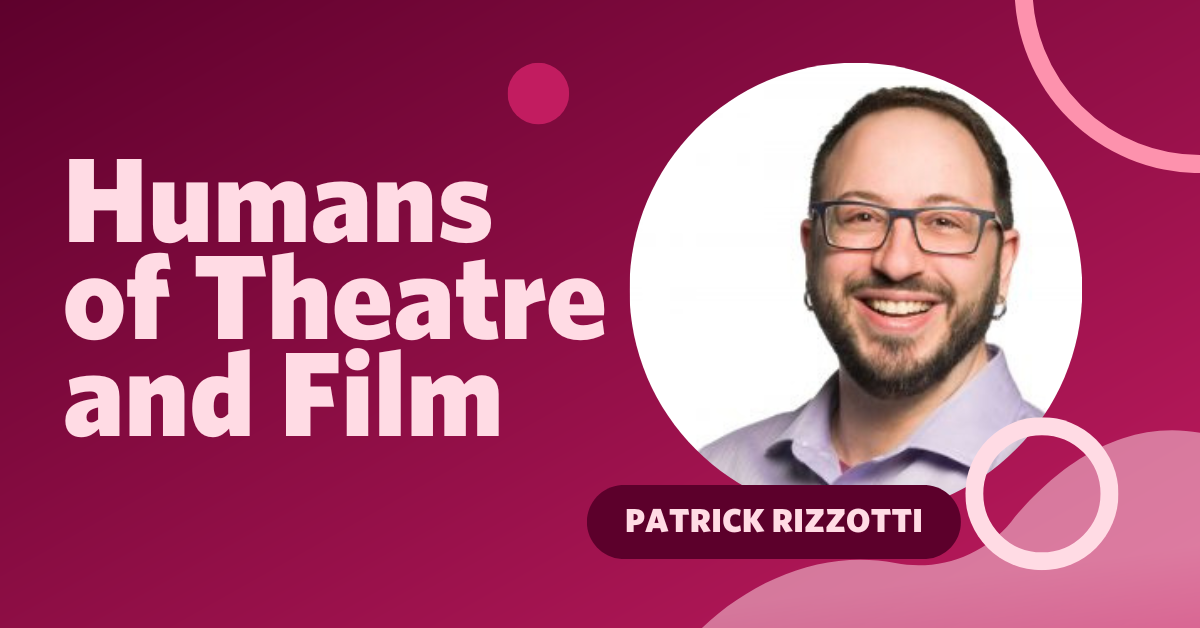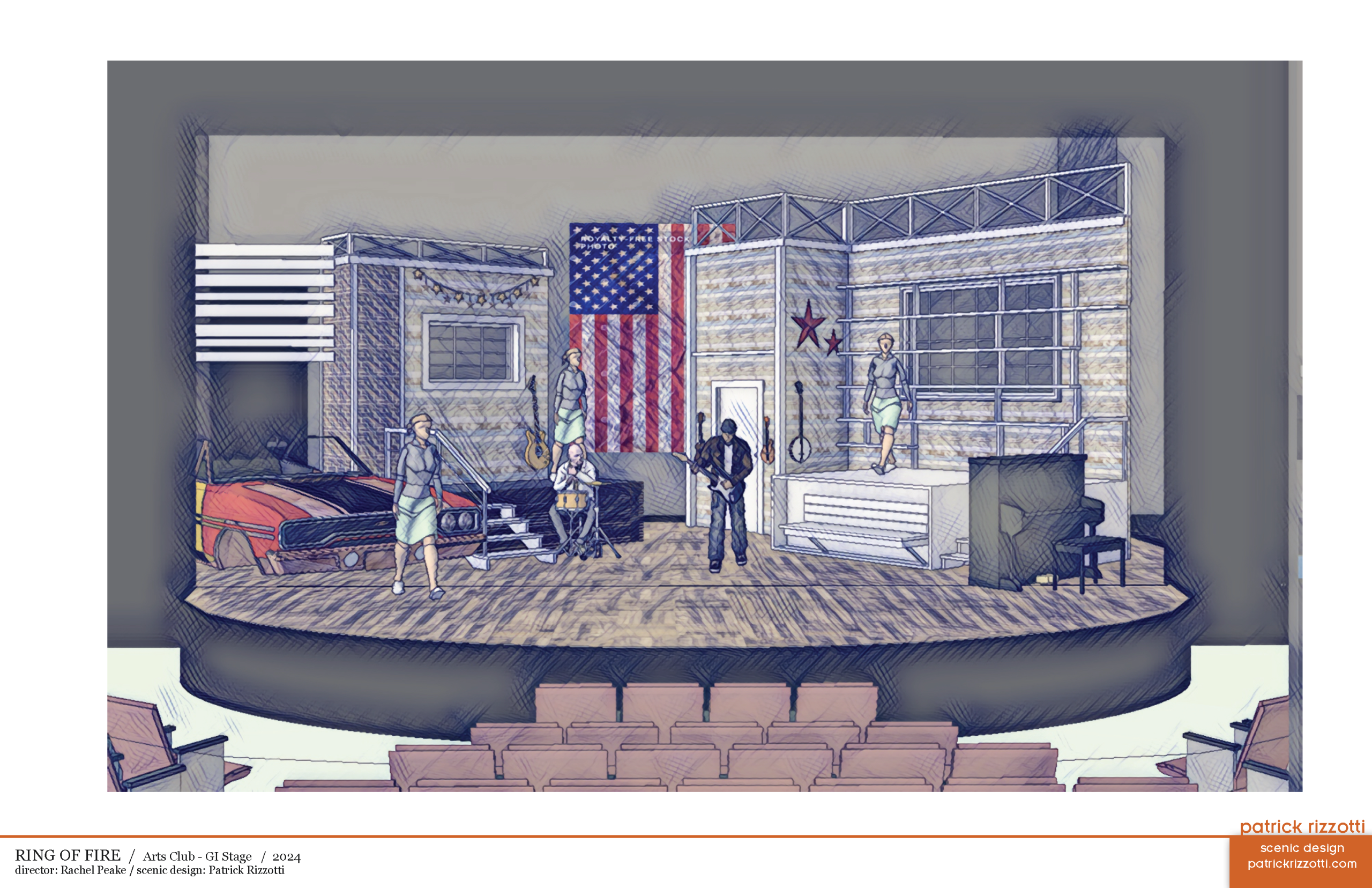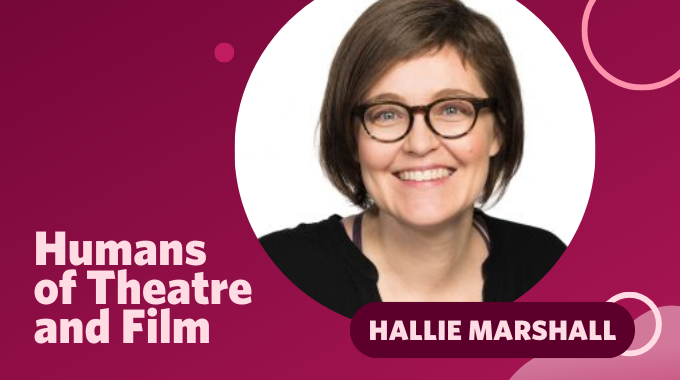

When many of us think of theatre and film, we envision showtime!, action!, and “to be or not to be!” While these fields are undeniably action-packed and creative, they encompass so much more. They’re about crafting and studying whole worlds. Theorizing and analyzing all those intricate moving parts that build experiences. Delighting audiences and inspiring them to reflect upon their own assumptions of what it means to be human.
The Department of Theatre and Film at UBC is home to a diverse group of passionate and talented professors, staff, and students, who specialize in a wide range of theories, practices, genres, and methods. We are excited to introduce you one of the humans that make up our department, Patrick Rizzotti, Associate Professor, Theatre Production & Design. Patrick believes in the power of rest to replenish the creative well and that design principles extend beyond theatre to all aspects of life.
How did you know academia was for you?
I didn’t! I spent 20 years as a freelance designer in theatre and film and TV. One of the ways I learned to refill my own creative well was by talking about design. I love teaching because it inspires me to see how others approach challenges and explore and express ideas.
Which courses do you teach?
I teach a range of courses, from basic design and storytelling to graduate design classes. I’m currently prototyping a 200-level course called Visual Narrative: Exploring Design and Creative Process that will go live in 2025W. The course emphasizes understanding design principles and fostering the creative process behind these principles. Students will engage in exercises that challenge them to think creatively and innovatively, applying theoretical knowledge to practical scenarios.
I also teach courses that are more specific to scenic design (THTR 305, 405, 505) or production design (Film THFL 304) and advise students who are designing productions for our theatrical season.
What can students expect in your classes?
Students can expect a safe and creative space to develop their design instincts. My project-based classes focus on discussing stories or creative prompts and finding ways to express those ideas. We explore story, mood, emotion, and theme, emphasizing why we tell these stories now and how they relate to us today. Students are on a creative journey. They arrive at a specific point, and I guide them along their path, helping them progress.
In lower-level classes we start with the Elements of Design and then explore the Principles of Design to create strong visuals that support a story. Upper-level classes build on these foundational skills, focusing on advanced techniques to develop a complete design package that a scene shop can build, paint, and prop for a show.
I enjoy collaborating closely with my colleagues to ensure our courses collectively provide a well-rounded learning experience.
What advice do you have for undergrad students?
We can’t keep generating ideas without refilling our creative well. How to do that will look different for each of us. Go see shows, read books, walk in nature, sketch in a coffee shop, listen to podcasts, or do whatever else excites you. And sleep! Downtime is essential to allow all the experiences and ideas to integrate into our larger creative process.
What advice do you have for students considering graduate studies?
Grad school is a significant investment of time, money, and energy. My advice is to have a deep understanding of what you hope to gain from it and find a place that can help you achieve that. Visit the school, talk to the students, meet the faculty, and sit in on a class. Choosing the right grad program is a big decision and deserves careful consideration.
What are your favourite questions students have asked you about your field?
When students ask, “How does this apply to…?” There’s always an answer! The principles we study in design apply to almost all aspects of life and can be useful in whatever career a student ends up in. The course’s relevance extends beyond traditional art and theatre contexts, proving valuable in areas such as research poster design and social media content creation. In today’s visually-driven world, the ability to craft and interpret effective visual narratives is increasingly important.
Tell us about a project you are currently working on.
I’m currently working on Ring of Fire at The Arts Club Theatre Company. This musical tells the life of Johnny Cash and explores what it means to live a well-lived life. Designing for a jukebox musical can be challenging, but the director, Rachel Peake, and I are using the concept of memory to set the show’s tone. We’re creating a world that evokes the feeling of memories—gaps, haziness, and stored moments. The design incorporates vinyl textures, depth, and imperfections, creating a nostalgic atmosphere that mirrors the experience of listening to a vinyl record. By using the idea of a junk shop, we can pull and activate memories, allowing for a rich, imperfect, and deeply evocative visual narrative.


What is your favourite place on campus?
Hands down, the Nitobe Memorial Garden. It’s a wonderful place to escape for a while to just think or reset after a busy class.
What is your favourite way to relax?
I love to walk and let my mind wander. I often stroll around campus or explore parts of the city I rarely visit. Sometimes I listen to music, but I usually prefer silence, allowing my thoughts to flow freely and find their own paths.
Is there a favourite movie/tv show/book you’ve enjoyed lately?
I’ve recently enjoyed two very different books that offer profound insights in their own ways. Klara and the Sun by Kazuo Ishiguro resonated with me because it explores life and memories through the eyes of an artificial friend. The interplay between human and AI is intricately depicted, raising questions about what it means to be human and the nature of consciousness. That’s all I’ll say because I don’t want to spoil it.
The Sound of a Wild Snail Eating by Elisabeth Tova Bailey drew me into the narrator’s deep observation of the natural world. This book exposes the beauty and lessons that emerge when we are forced to slow down and observe life at a different pace. What connects these two stories is their exploration of the human experience through different lenses. Both books encourage a reflection on life, memory, and our interactions with the world around us—whether through the rapid advancement of AI or the slow, deliberate pace of nature. They reminded me of the importance of introspection and observation in understanding our place in the world.


